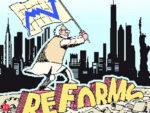India has slid to 101st place out of 116 nations in the Global Hunger Index (GHI) for 2021, down from 94th place in 2020. With a score of 27.5, India falls into the severe category for hunger. This has pushed the urgency and necessity for improvements in India’s dietary strategy to the fore.
GHI Findings
GHI is made up of four parts. India’s performance in the four areas is as follows:
- Undernourishment: 15.3 percent of the population is undernourished in 2018-2020.
- Child Stunting: From 2016 to 2020, the prevalence of stunting in children under the age of five years will be 34.7 percent.
- Child Wasting: From 2016 to 2020, the prevalence of wasting in children under the age of five years will be 17.3 percent.
- Child Mortality: In 2019, the Under-5 Mortality Rate was 3.4 percent.
- Analysis: India has achieved significant improvement since 2000, yet there are still areas of worry, notably in the area of child nutrition.
- The GHI score of India has dropped.
- The proportion of the population that is undernourished, as well as the under-five child mortality rate, are presently at historically low levels.
- While child stunting has decreased, it is still considered a serious problem.
- Despite year-on-year improvements, India has the highest child wasting rate of all of the GHI countries.
Causes of Malnutrition :-

There are multiple dimensions of malnutrition in India that include –
- Calorific shortfall– Despite the fact that the government has a surplus of foodgrains, there is a calorific deficiency due to inefficient allocation and distribution. Even the yearly budget isn’t being used to its maximum potential.
- Protein deficiency– Pulses have an important role in addressing protein deficiency. However, there are insufficient fiscal resources to address the issue. With eggs being removed from the menus of Mid-day Meals in a number of states, a simple approach to increase protein consumption has been lost.
- Micronutrient insufficiency (also known as hidden hunger): Micronutrient deficiency is a serious problem in India. Poor nutrition, illness, or unmet micronutrient demands during pregnancy and breastfeeding are among the causes.
- Other Factors: Access to healthy food is simply one of several factors that influence nutrition.
Other factors like-
Poor access to safe drinking water, sanitation (particularly toilets), immunisation, and education, particularly among women, all contribute to this dire condition.
Government Interventions :-
- Eat Right India Movement: A public awareness campaign organised by the Food Safety and Standards Authority of India (FSSAI) to encourage Indians to eat healthily.
- POSHAN Abhiyan-The Ministry of Women and Child Development launched the POSHAN Abhiyan in 2018 with the goal of reducing stunting, undernutrition, and anaemia (among young children, women and adolescent girls).
- Pradhan Mantri Matru Vandana Yojana:The Pradhan Mantri Matru Vandana Yojana is a maternity benefit programme introduced in all districts of the nation with effect from January 1, 2017. It is a government funded initiative run by the Ministry of Women and Child Development.
- Food Fortification-Adding important vitamins and minerals like iron, iodine, zinc, Vitamin A, and D to basic foods like rice, milk, and salt to boost their nutritional value is known as food fortification or food enrichment.
- National Food Security Act, 2013:The National Food Security Act of 2013 established the Targeted Public Distribution System, which allowed up to 75 percent of the rural population and 50 percent of the urban population to receive subsidised food grains.
- Mission Indradhanush:Mission Indradhanush aims to immunise infants under the age of two and pregnant women against 12 vaccine-preventable diseases (VPD).
- Integrated Child Development Services (ICDS) Scheme: The ICDS Scheme, which began on October 2, 1975, provides a bundle of six services to children aged 0 to 6, pregnant women, and breastfeeding mothers.
- Supplementary nutrition, pre-school non-formal education, nutrition and health education, 4 o Immunization, health check-ups, and referral services
Way Forward :-
- Agriculture-Nutrition Linkage Schemes have the potential to have a bigger impact in combating malnutrition, hence they deserve more attention.
- In 2019, the Ministry of Women and Child Development introduced the Bharatiya Poshan Krishi Kosh, recognising the importance of this relationship.
- In rural regions, there is a need to develop programmes that improve nutrition-agriculture linkages. The trick, though, is to put the plan into action.
- Early money disbursement: The government must guarantee that monies are disbursed promptly and that funds are used efficiently in nutrition-related programmes.
- Underutilization of Resources: It has been pointed out several times that the expenditures made under many nutrition-based programmes are far lower than the funds allotted. As a result, the focus must be on implementation.
- Convergence with Other Programs: Better nutrition is influenced by a variety of factors, including economics, health, water, sanitation, gender perspectives, and social norms. As a result, appropriate implementation of other programmes can also help improve nutrition.
- The confluence of the Swachh Bharat Abhiyan, Jal Jeevan Mission, and nutrition-related programmes would result in a comprehensive transformation in India’s nutrition situation.
- 5 Mid-Day Meal Scheme: The Mid-Day Meal Scheme strives to improve schoolchildren’s nutrition by delivering a balanced food in the classroom. By adding milk and eggs in each state’s meal, as well as developing a menu based on climatic conditions, local cuisine, and other factors, children in various states can receive the proper nutrients.
Conclusion :-
- With the world’s biggest population of undernourished people, India must work quickly to achieve Sustainable Development Goal 2 of “Zero Hunger” by 2030.
- Malnutrition has an impact on cognitive ability, workdays, and health, according to the World Food Programme and the World Bank, therefore addressing India’s nutrition crisis can help the country not just eat better but also develop wealth.
- The GHI rating should motivate us to examine our policy priorities and initiatives to ensure that they are capable of successfully addressing the issues presented, particularly in the case of Covid-19-induced nutrition insecurity.

